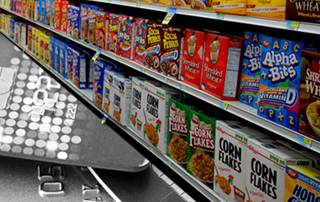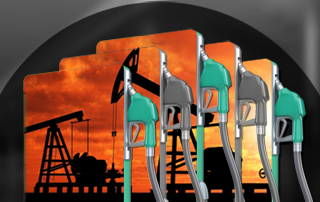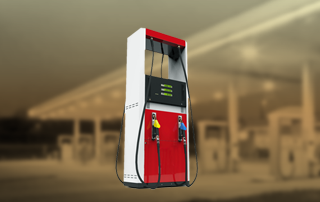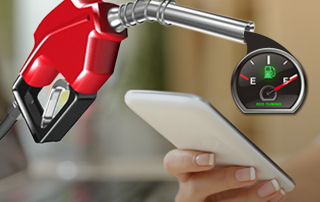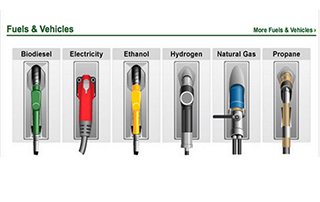
October 28, 2015 / By Hubworks / In Advanced Fuel and Payment Controller - Autogas / Comments
Driving Consumer Demand – An Analysis on Consumer Demand Determinants and the Result on Fuel Choices
Driving Consumer Demand – An Analysis on Consumer Demand Determinants and the Result on Fuel Choices
The fuel station industry has always been an industry of change. Once a full service industry where attendants would pump gasoline for customers has been consolidated and automated for quick, machine-operated stations where customers interact with a machine rather than a person. Now, the industry is changing again. As the automobile industry has began producing vehicles that run on alternative fuels including electricity and natural gas, the fuel station industry is changing with it. Alternative energy vehicles have grown in market share and are poised to challenge traditional fossil fuels and gasoline consumption. While gasoline stations with convenience stores have reached late maturity, the alternative fuel industry is growing rapidly. CNG (Compressed Natural Gas) and LNG (Liquefied Natural Gas) stations are expected to grow 13% and 55% respectively in the next year1. Furthermore, EV charging stations are expected to grow by more than 1 million stations globally each year through 20202. As both traditional and alternative energy fueling stations begin to tackle the changes in the industry, they need to be aware of the decision making process customers go through when choosing which fuel station to use. Below is an analysis of which factors go into a customer’s decision making process when choosing a fueling station and the implications of the alternative fuel industry’s growth in the marketplace.
Price
People are always talking about the price of gas. Whether gas prices be rising or falling, everyday consumers and economists alike will reference gas prices as a barometer of the short-term state of the economy. Economists would infer that a rise in fuel prices would lead to less consumption and more ride sharing (carpooling) and fewer trips taken. Yet, historically, gasoline consumption has had a relatively inelastic demand with short term price changes. This makes sense since people need to still carry out their daily tasks, regardless of the price of fuel. Therefore, it would seem that price has little impact on consumer demand.
However, this analysis is misleading. While customers may have little choice in deciding whether or not they need to fuel their cars, they are constantly cognizant of the price. According to a study by the NACS, consumers state that price was far-and-away the number one factor in choosing between fueling stations. 63% of respondents claimed price was the number one factor customers used when purchasing gas, followed by location (20%) and brand (8%) 3. So, even if they may not be able to eliminate their fuel purchases when prices go up, consumers still are heavily influenced by price when choosing between stations.
Furthermore, while short-term demand may not decrease with an increase in gas prices, studies show customers will look for long-term solutions to rising gas prices. According to a study by the U.S. Energy Information Administration (EIA), household gasoline expenditures have decreased since 2013. Projected household gas expenditures in 2015 are projected to reach an 11-year low. This decrease has come from two main factors. First, government regulations on fuel efficiency have made newer cars more fuel efficient. As older vehicles are removed from the market, the newer vehicles replacing the older, less efficient vehicles have driven down the requirement to fuel up as often. Since customers don’t need to fill up as often, the demand for gasoline goes down. Also, as gas prices increase, customers who are in the market for new vehicles are more open to the idea of purchasing an alternative energy vehicle rather than a gasoline fueled vehicle. A study conducted in California by the Office for Low Emission Vehicles showed that saving money on fuel costs was the number one reason why new electric vehicle owners decided to purchase an electric vehicle. Over 40% of respondents said fuel costs were the most important factor in purchasing an electric vehicle¸ followed by HOV lane access (18%) and environmental impacts (23%) 5. Therefore, it is critical that fuel stations remain price competitive in order to attract customers both in the short term and the long term.
Location
Behind price, location of stations is the second most important factor that customers consider when choosing a fueling location. However, location and price go hand-in-hand. While only 20% of drivers claimed that location was the most important factor when choosing a fueling station, drivers have a limited ability to shop around for the best gas prices due to their geographic limitations. While a driver may be willing to drive a farther distance for a better price, it is relative to the distance they would have to travel to obtain a substantially lower price. Opportunity costs would suggest there is a perfect equilibrium to people driving “X” amount of miles to receive a “Y” discount on price. Yet a customer’s willingness to drive a farther distance to fill up is unique to each individual’s unique opportunity costs. Consumers place their own, intangible values on convenience and cost. While some consumers are willing to drive 5 minutes out of their way to find a cheaper price, others aren’t willing to sacrifice time just to save a few dollars. In essence, consumers are tethered to the stations within the radius their remaining fuel can take them. But because consumers have different opportunity costs for convenience, location evaluation is a more relative, subjective methodology than price evaluation for consumers.
Another important discussion in regards to location is the competitive landscape. Most traditional gas stations compete in a relatively perfectly competitive market. Therefore there is high competition not on a regional scale, but on a local scale. Stations often compete with other stations directly across the street. This is why price wars are common amongst gas stations in the direct vicinity of their competition. Yet due to the recent growth in the alternative energy automobile market, stations for CNG, LNG, and EV vehicles are rapidly growing. However, these energies are more commoditized than traditional gasoline supplies. Because of this, alternative energy stations compete in a more perfectly competitive market than gasoline stations whose products have minor points of differentiation. As a result location becomes the most important factor for fueling stations of alternative energies.
The Further Commoditization of Fuel
As discussed previously, traditional gasoline stations compete in a relatively perfectly competitive market. While there is differentiation between products with some fuels having more additives and proposed benefits than others, brand recognition only accounts for 10% of consumer preference. An example of how commoditized the gasoline industry is. Furthermore, alternative fuels are even less differentiated than traditional fuels. Alternative energies for vehicles including electric, CNG, and LNG are sourced from public utilities; therefore have little to no differentiation. Since there is little differentiation for these energy sources, other factors including location, and distance between locations, will have more of an impact on consumer decisions.
As the fuel industry begins to change, companies need to be nimble and able to adapt to changing market conditions. As the energy market for vehicles becomes more commoditized, companies need to be able to produce at lower costs, streamline operations, and focus on an alternative marketing mix in order to establish and maintain market share. Much like how the gas stations of the mid 20th century moved to a more customer-operated model in the late 20th century, the 21st century will see a change in how customers interact with fueling stations. The way we understand gas stations is changing, but in reality, they have always been changing.
